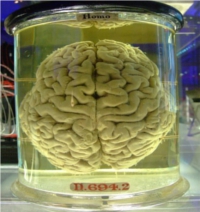The difference between Mars and Earth is that one of them falls into the habitable zone, while the other doesn’t. This habitable zone – a small path along a star where a planet is not too close and not too far away that life could exist on its surface – was redefined today, and Earth just barely made the cut.
Scientist took updated atmospheric databases called HITRAN and HITEMP which basically measure how much energy the water absorbs and how much energy carbon dioxide can retain, and updated our current place within the habitable zone in our solar system. After their calculations were plotted on the new chart, they discovered that our planet was just inside the habitable zone.
The habitable zone is used to identify if a planet has the right temperature to retain liquid water on its surface. If a planet is too far away from its parent star, the water will freeze, if its too close, the water will vaporize away. Obviously, a planet with liquid water would be a primo spot for life to flourish.
This new redefined boundary means that many planets that we thought were in the habitable zone, are no longer in the sweet spot to hold life, however, this also allows planets that had recently been excluded as candidates for life to come back into the realm of plausibility.
How much did our Earth move on this zone? Not much, only .04 AU’s closer to the sun from the previous data which was collected 20 years ago – by James Kasting from Penn State. An AU is a term used to define an Earth-Sun distance, 1 Astronomical Unit is about 150 million kilometers in size. So our records went from 0.95 AU – 1.67 AU to the new distance of .99 AU – 1.7 AU (remember the path of the Earth around the sun is not a perfect circle. Throughout the year, the Earth shifts about .8 AU’s. This shift makes the difference between Winter and Summer.)
Abel Mendez from the University of Puerto Rico at Arecibo is a researcher in charge of a Habitable Exoplanet Catalog – a catalog with all the planets that could hold life. He stated that this new study is going to require him to update the catalog and kick off or squeeze in new planets to fit this new data.
Basically, since the Earth is now just inside the new boundary – and we seem to be pretty comfortable – this means that the habitable zone’s outer edges could be extended to areas that we once thought were too extreme 20 years ago.

The main planet that Mendez is particularly excited about is Gliesse581d, a planet who’s path, using outdated data, was on the outer edge of the habitable zone. With this new redefinition of the zone, the planet’s new path is now right in the middle of the zone. What’s interesting about the new zone is that Mars is now also in the zone, on the outer cooler boundary, but it’s there.
This new data, however, does not take into consideration cloud formations, which according to the researchers have a huge impact on the habitability of a planet. What I want to know is, what happens after we fall completely outside of the habitable zone and we’re still alive, do we change it up again? Or will we be officially screwed?
Via Space.com





